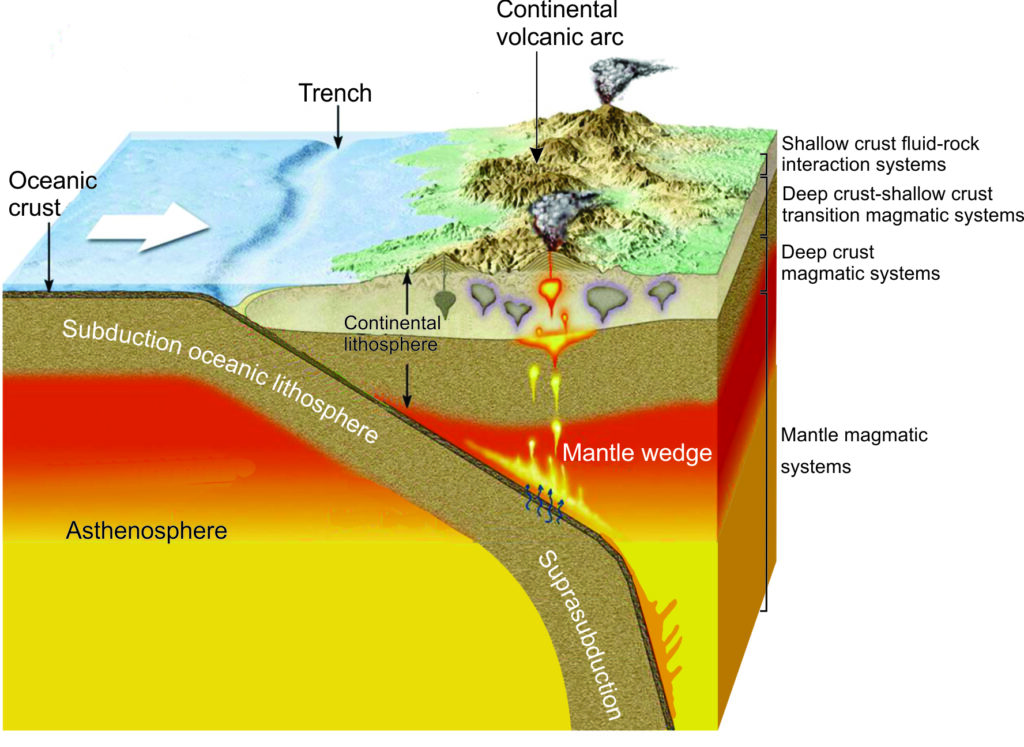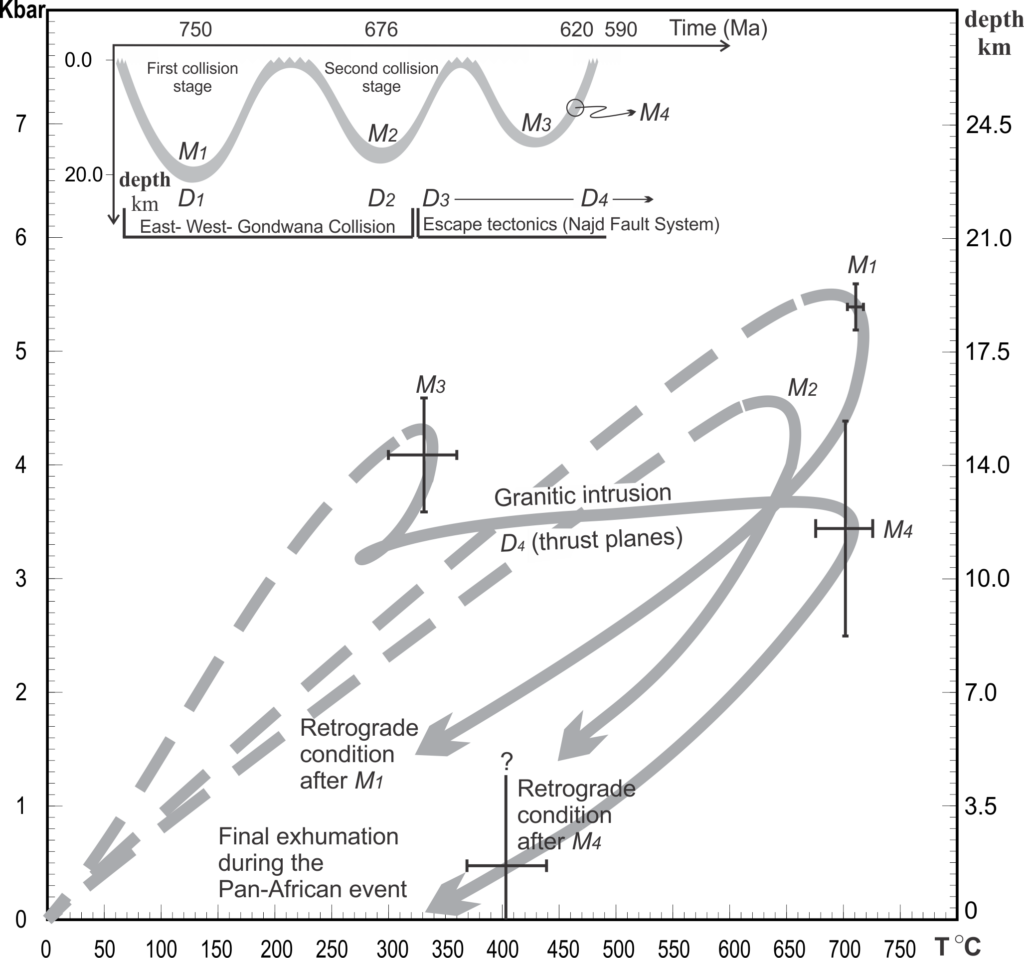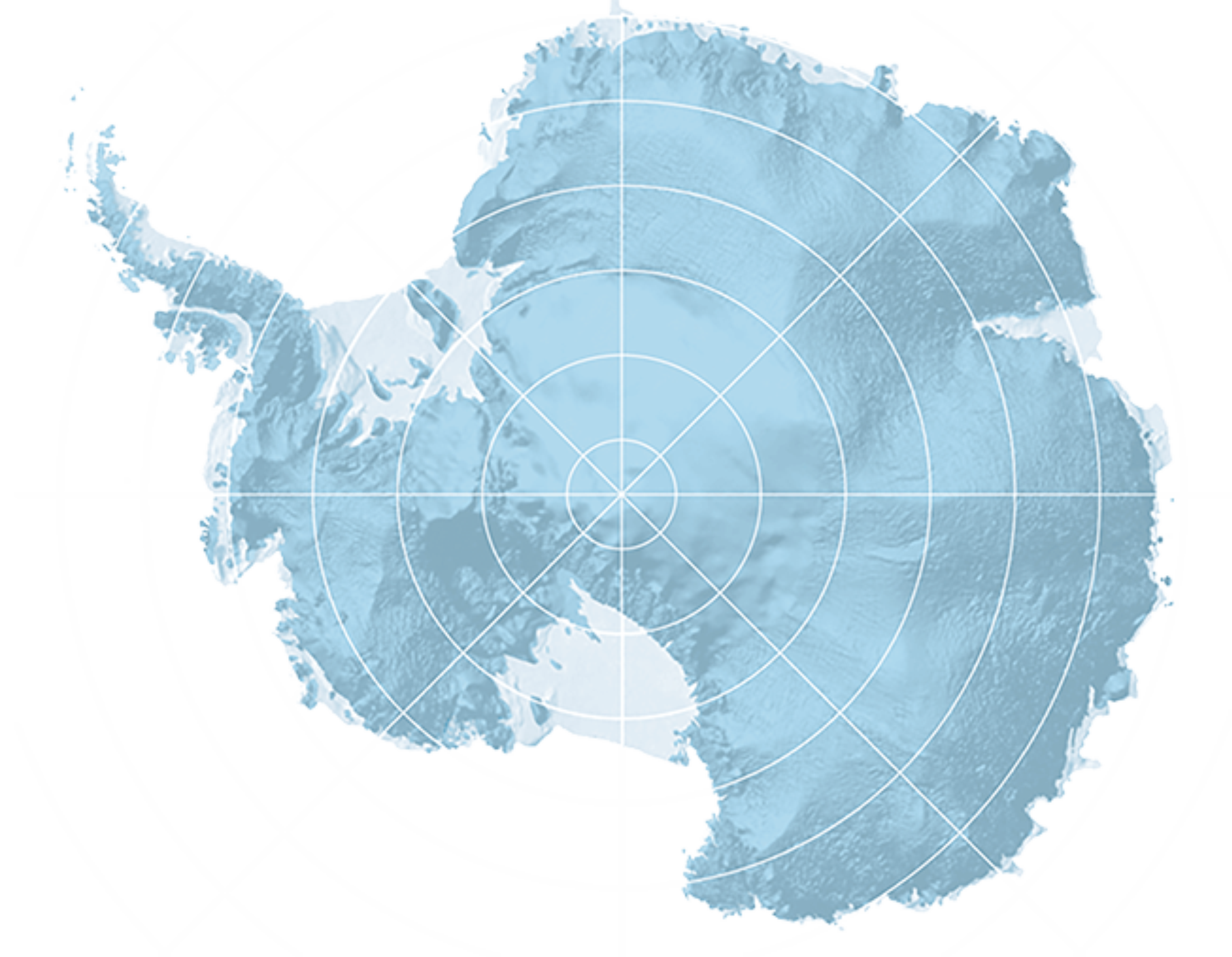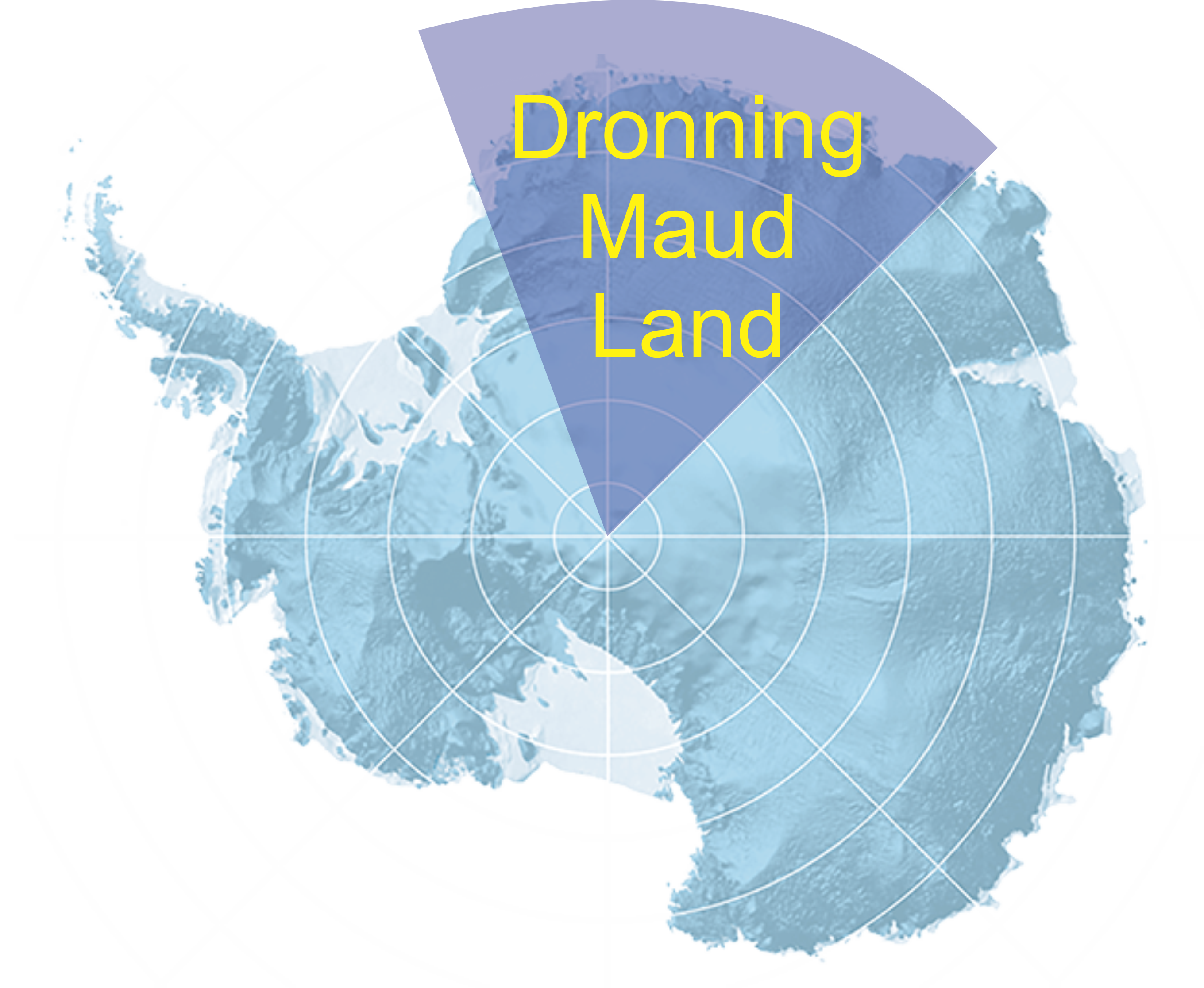My research focuses on:
- Magma generation in different tectonic setting.
- Magma intrusion, assimilation and mixing.
- The coupling between magmatic, metamorphic and deformation processes.
- Geochemistry of the igneous rocks (e.g. mantle section rocks and granitic rocks)
- Tectonic evolution of Earth lithosphere.
- Exhumation of deep crustal rocks and the associated igneous activities.
- Fluid-rock interaction and diffusion processes.
- Investigation of secular change in the thermal structure of the lithosphere.
- Evolution of supercontinents (e.g. Rodinia and Gondwana).
- Understand different tectonic processes.
- Crustal-scale shear zones.
- Formation mechanisms of ore deposits (e.g. BIF and gold deposits).
My research utilizes petrology, high-temperature geochemistry, computational petrology, numerical/thermodynamic modeling (e.g. phase equilibria modeling using THERMOCALC, PerPle_X and MatLab), mineral chemistry, geochronology and structural geology. My research also encompasses building GIS databases and writing codes (using Visual Basic, ASP.net, php and MatLab) to solve petrological problems.
- Introduction
- Development of my research
- Current research projects/funds
- Previous research grants
- Research grant applications
- Current research (manuscripts in progress and/or submitted)
- Major finding using igneous petrology and geochemistry (igneous system)
- Major finding using metamorphic petrology and structural geology
- Major finding using fluid-rock interactions (e.g., geo-resources)
- Major collaborations
Introduction
My research focuses on understanding major processes in the solid Earth. In the majority (45%) of my research projects, I used magmatic rocks as case studies. However, my key strength is multidisciplinary research, which encompasses coupling between magmatic and metamorphic processes (24% of my publications), formation mechanisms of different ores (magmatic related ore-deposits; 8%), fluid-rock interaction (4%) and diffusion processes at the mineral-scale (4%). Understanding the tectonic evolution of the solid Earth cannot be accomplished without studying the architecture of the lithosphere, therefore my research includes structural geology studies (15% of my publications). As an active academic, I have two publications to encourage the scientific community to go more toward open data and open-access publications. This is aligned with the strategic vision of different universities and research councils e.g. the UiT, Norwegian Research Council and the Europian Research Council.
Development of my research
At an early stage of my career, I had a narrow vision and I focused on different processes as separate systems. However, with maturity I can now see that these processes should be studied as an integrate system. My research career started in 2004 studying magmatic rocks (i.e. granitic and metavolcanics rocks). Since 2006, my research has broadened to cover the topic of tectonic evolution of orogenic belts, supercontinents and Earth lithosphere. Recently I have focused more on using geochemistry and igneous petrology to understand the geodynamics of the mantle using ultramafic rocks as case studies.
Current research projects/funds
- 2021-2022. “CloudEARTH: Cloud Computational Platform for Earth and Environmental Sciences – A pilot study“. Financial support (600 000 Norwegian Kroner) from the Digitaliseringsrådet at UiT The Arctic University of Norway.
- 2018 – 2021: “Open Polar” – UiT The Arctic University of Norway – Strategy fund. Project number: 550134 (ca. 2.5 Million Norwegian Kroner)
- 2021 – : “Petrogenesis and Tectonic Implications of Wadi Sikait-Abu Resheid area, South Eastern Desert, Egypt: New Insights from Geochemistry, Mineralogy and geothermobarometry” (Master thesis project of Mayada Eldeeb – supported by Tanta University, Egypt)
Previous research grants
- 2014 – 2018: “Geological map compilation of Dronning Maud Land” – Ministry of Foreign Affairs / Norway (Oslo, Norway) – Grant: 14330-299
- 2011 – 2014: “Exhumation processes of the Najd Fault System” (Austrian Science Fund Stand-Alone grant (300.000,- Euro) – Grant: P22351).
- 2011 – 2012: “Economic geology of the Arabian-Nubian Shield” (Star Petroleum/SPmining, Madrid, Spain (~ 300.000,- Euro)).
- 2006 – 2010: “Metamorphic Evolution of the Wadi Feiran Migmatites, Sinai, Egypt” Austrian Exchange Service (ÖAD) grant.
Research grant applications
Current research (manuscripts in progress and/or submitted)
- Early Ensimatic Stage of the Arabian-Nubian Shield (Accepted – in print)
- Pan-African tectono-thermal evolution of metamorphic complexes in Sinai: Transition from continental-arc collision to back-arc rifting in northern Gondwana (Submitted)
- Petrogenetic constraints on the origin and evolution of the Wadi Ghadir ophiolites, Eastern Desert, Egypt (in progress)
- Corundum and amphibole-bearing ultramafics in Orlica-Śnieżnik Dome-SW Poland: from hydrous aluminum metasomatism in the mid- Saxothuringian Ocean to retrogressive metamorphism in the magmatic arc of the Variscan Orogeny (in progress)
- Mineral stability at the mantle transition zone (in progress)
Major finding using igneous petrology and geochemistry (igneous system)
Mantle magmatic systems (Fig. 1): The geochemical signature of arc magmatism is controlled by the chemical composition of the subducted slab. Recent research, published in Scientific Reports, aimed to study the role of subducted oceanic lithosphere as a carrier of fluid-mobile elements (Gamal El Dien et al., 2019). The study highlights the role of antigorite in the transport of fluid-mobile elements (FME) and light rare earth elements (LREE) from the subducted lithosphere to arc-related magma. Moreover, the research emphasizes that magnesite remains stable at sub-arc depths beyond the stability field of antigorite and represents a potential reservoir of FME and LREE for deeper mantle melts.
The chemical structure of the Pan-African mantle wedge reservoir beneath the Arabian-Nubian Shield was studied using peridotite samples (Abu-Alam and Hamdy, 2014; Gamal El Dien et al., 2016). The studies show that the mantle wedge had a heterogenous chemical composition as indicated by the variations of partial melting degrees. Moreover, these studies indicate that the magma extraction took place under different oxidation state (i.e. reducing or oxidizing conditions; Abu-Alam and Hamdy, 2014; Gamal El Dien et al., 2016; respectively). Abu-Alam and Hamdy (2014) indicate that the magma produced in the mantle wedge formed due to interaction with Ti-rich melts (boninite) generated by partial melting of the supra-subducted lithosphere. The chemistry of the peridotites was altered at shallow crustal depths due to interaction with two different types of fluids: first, CO2-rich fluid released from carbonate-bearing sediments, and then metamorphic-related fluid (Abu-Alam and Hamdy, 2014).
 Fig. 1: A cartoon shows different magmatic systems that I have studied in my research. Other systems (e.g. rift-related magmatic system, magma generation due to slab break-off and lower lithosphere delimitation) are not shown in the cartoon however my research covers these processes. The figure compiled from different publications cited in the text.
Fig. 1: A cartoon shows different magmatic systems that I have studied in my research. Other systems (e.g. rift-related magmatic system, magma generation due to slab break-off and lower lithosphere delimitation) are not shown in the cartoon however my research covers these processes. The figure compiled from different publications cited in the text.
Deep crustal magmatic systems (Fig. 1): In contrast to the mantle where the magmatic systems are controlled by the chemistry of the subducted lithosphere and the original composition of the mantle, geodynamics of upper mantle-lower crust controls deep crustal magmatic systems. In the Arabian-Nubian Shield, a change of tectonic regime from a compressional volcanic arc to extensional within plate tectonics resulted in a change to the chemistry of the magma produced in the deep crust during the Pan-African orogeny from tholeiitic and calc-alkaline affinity to potassium-rich peraluminous magma (Hassan et al., 2016). This transition from tholeiitic/calc-alkaline magma generation to potassium-rich peraluminous magma occurred around 605 – 580 Ma (Hassan et al., 2015).
Deep crust-shallow crust transition magmatic systems (Fig. 1): At the deep-shallow crustal transition zone, where the rheology of the crust changes from ductile to brittle, the magmatic systems are controlled by the mineralogical composition, fluid content of the rocks, and shear zones. At this transition zone, it becomes difficult to draw a line that separates the magmatic and the metamorphic systems. Exhumation of deep crustal rocks (i.e. metamorphic rocks) can cause partial melting of fluid-bearing deep crust (decompression melting) forming granitic melts that intrude the shallow crust using the shear zones as passage (Abu-Alam et al., 2014; Abu-Alam and Stüwe, 2009). Abu-Alam et al. (2014) studied the collision stage of the Pan-African orogeny and concluded that granitic melts were produced by decompression melting during exhumation of deep crustal rocks. The granitic melts intruded the shallow crust (i.e. depth of 10-14 km) as post-tectonic granites causing contact metamorphism.
Shallow crust fluid-rock interaction systems (Fig. 1): Brittle tectonics and low-temperature conditions of the shallow crust do not allow the production of magma, but instead, these conditions are the preferable environment for fluid-rock interaction processes and formation of ore-deposits. Abu-Alam et al. (2010) used petrological, geochemical and mineralogical evidence to distinguish between fluids released from magmatic systems and those liberated from metamorphic systems. Abu-Alam et al. (2018) concluded that the fluid released from ultramafic igneous rocks can contain a considerable amount of Au. These Au-bearing fluids need reducing conditions (e.g. Fe- or C-bearing rocks) in order to precipitate as gold-ores.
In addition, my research encompasses kinetic and diffusion studies at the mineral-scale. Abu-Alam and Stüwe (2011) studied a petrographic feature that has been rarely described in the literature (i.e. strain cap minerals). The study highlights the role of fluid-rock interaction as a formation mechanism of the strain cap minerals. The study suggests that fluid flow is preferentially focused parallel to the foliation planes causing formation of the strain cap minerals. The importance of this study is beyond the explanation of the formation mechanism, but researchers can use the chemistry of the strain cap minerals as an indication of the source regions of the fluid. The kinetic and diffusion studies can be applied to understand the formation mechanisms of different minerals in magmatic systems.
Major finding using metamorphic petrology and structural geology
The most significant contributions using cross-disciplinary approaches of metamorphic petrology, quantitative thermodynamic modeling, geochronology and structural geology have 1) clarified the petrogenesis, the exhumation mechanism and determined P-T-D-t paths of high-grade metamorphic rocks of the Arabian-Nubian Shield; 2) recognized high-grade metamorphic rocks of the northern part of the Arabian-Nubian Shield as metamorphic complexes, exhumed in oblique transpression setting during the Gondwana collision; 3) constrained the absolute age of shear zones activity of the largest Proterozoic shear zone on Earth (i.e. Ajjaj shear zone a branch of the Najd Fault System); 4) studied the P-T–D-t path and the age of crustal thickening during the collision of East and West Gondwana using Hafafit metamorphic complex, Egypt as a case study; 5) studied the multistage tectonism (i.e. metamorphism and deformation) during the Gondwana collision using Baladiyah Complex, Saudi Arabia as a case study; 6) identified a new type of metamorphic complexes (i.e. strike-slip complexes) in which the high-grade rocks exhumed due to activity of strike-slip shear zones; 7) studied the thermal effects during the break-up of Rodinia supercontinent; 8) developed a new geodynamic model for western Dronning Maud Land, Antarctica involving earliest Pan-African metamorphism in eastern H.U. Sverdrupjella terrane, followed by later diachronous tectonic accretion of the eastern H.U. Sverdrupjella arc segment onto the western H.U. Sverdrupjella crustal segment; and, 9) presented a new geodynamic model of Kromberg type-section, Paleoarchean Barberton Greenstone Belt, South Africa in which an inverted metamorphic field gradient is documented.
 Summary of the P-T paths of high-grade, medium-grade and low-grade metamorphic rocks of the Arabian-Nubian Shield (NW Saudi Arabia). The thick arrows mark the P-T paths concluded from several P-T pseudosections while the dash arrows are suggested. The vertical and the horizontal bars are the average P and T. Note the final exhumation path terminated at temperature of about 400 oC but with uncertain pressure. The insert is a relation between the time and the depth of burial showing three cycles of exhumation and burial. The figure shows the evolution the supercontinent Gondwana and the collision history of the East- and the West Gondwana from ca. 750 Ma. to ca. 590 Ma. For more information please read Abu-Alam et al., 2014 (Journal of Petrology).
Summary of the P-T paths of high-grade, medium-grade and low-grade metamorphic rocks of the Arabian-Nubian Shield (NW Saudi Arabia). The thick arrows mark the P-T paths concluded from several P-T pseudosections while the dash arrows are suggested. The vertical and the horizontal bars are the average P and T. Note the final exhumation path terminated at temperature of about 400 oC but with uncertain pressure. The insert is a relation between the time and the depth of burial showing three cycles of exhumation and burial. The figure shows the evolution the supercontinent Gondwana and the collision history of the East- and the West Gondwana from ca. 750 Ma. to ca. 590 Ma. For more information please read Abu-Alam et al., 2014 (Journal of Petrology).
Major finding using fluid-rock interactions (e.g. geo-resources)
Fluid-rock interaction can form ore deposits (e.g. gold deposits), new minerals that record the fluid evolution history of the rock or types of rocks which have an economic interest. My most significant contributions in the fluid-rock interaction have 1) showed that strain cap minerals need fluid infiltration processes in order to be formed after rocks achieve peak metamorphism; 2) demonstrated the role of fluid-rock interaction as a mechanisms of formation of Arabian-Nubian Shield serpentinite and calc-silicate rocks; and, 3) presented a new formation mechanism of gold ores of the Arabian-Nubian Shield (e.g. figure below), in which the gold-bearing fluids were generated due to metamorphic devolatilization processes across the greenshist-amphibolite facies transition of ophiolitic and metasedimentary source-rocks.
 The amount and the composition of the fluid that will be released from ophiolitic rocks at the greenshist-amphibolite facies transition. a) P-T pseudosections in the CFMASH-CO2 chemical system of average ophiolitic composition showing the change in the mineral assemblages across the greenshist-amphibolite facies transition. b) A cross-section showing the amount (vol%) and the composition (XCO2) of the fluid that will be released from the rock. The cross-section was taken at P-T conditions equivalent to thermal gradient of 20 oC/km. The vertical lines are equivalent to the intersections between the different mineral assemblages and the geotherm. For more information please read Abu-Alam et al., 2018 (Journal of the Geological Society of London).
The amount and the composition of the fluid that will be released from ophiolitic rocks at the greenshist-amphibolite facies transition. a) P-T pseudosections in the CFMASH-CO2 chemical system of average ophiolitic composition showing the change in the mineral assemblages across the greenshist-amphibolite facies transition. b) A cross-section showing the amount (vol%) and the composition (XCO2) of the fluid that will be released from the rock. The cross-section was taken at P-T conditions equivalent to thermal gradient of 20 oC/km. The vertical lines are equivalent to the intersections between the different mineral assemblages and the geotherm. For more information please read Abu-Alam et al., 2018 (Journal of the Geological Society of London).
Major collaborations
- Eugene Grosch (Rhodes University, South Africa) – tectonic evolution of the Archean Barberton greenstone belt.
- Eugene Grosch (Rhodes University, South Africa) – tectonic evolution of the Dronning Maud Land.
- Sven Erik Meyer and Cees Passchier (Mainz University, Germany) – structural and tectonic evolution of the Arabian-Nubian Shield.
- Alan Collins (University of Adelaide) – Geochronology and tectonic evolution of East African Orogeny
- Mahmoud Hassan (Suez Canal University), Mahrous Abu-ElEnen (Saudi Arabia Geological Survey) and other members of the hard rock group of the Saudi Arabia Geological Survey – Tectonic evolution of Arabian-Nubian Shield
- Kurt Stüwe (Karl-Franzens-Universität Graz) – Many research projects.







